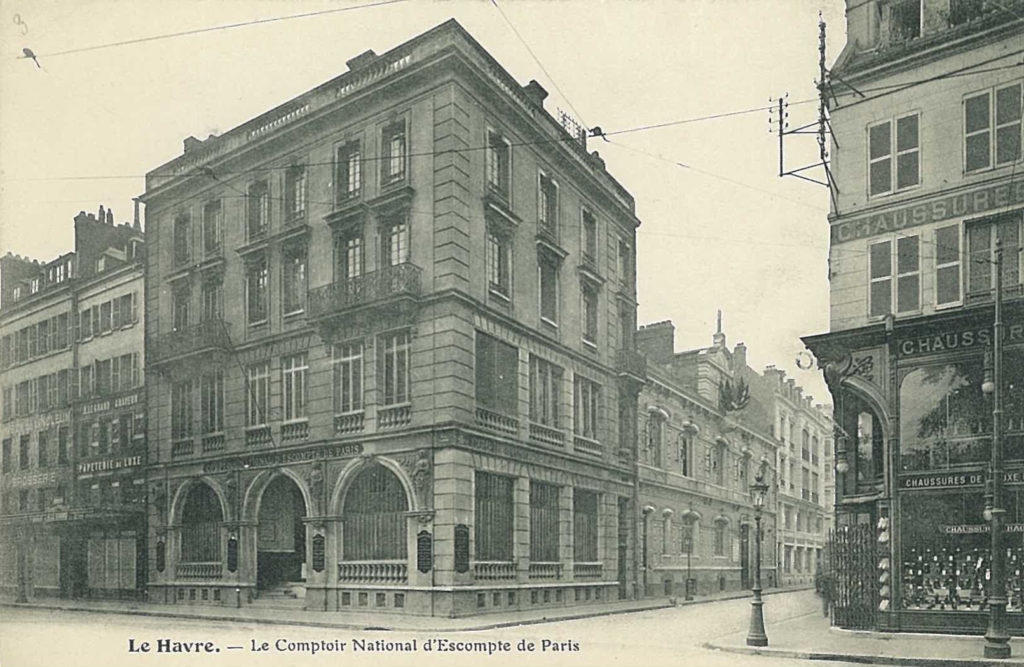The CNEP develops its bank network, facade of the Havre branch between 1910 and 1920
The Comptoir National d’Escompte de Paris (CNEP) opened an branch in Havre in 1890. This postcard from 1900-1920 shows a sideways view of the facade of its branch located on a shopping street in the city centre. The aesthetics of the front window are the traditional aesthetics of 19th century shops Open onto a travelled thoroughfare, the branch’s facade is embellished with a black and gold sign stating the company name. This promotes its image of an established reputation and seriousness. Grates cover the ground floor windows to protect the institution. And on the black panels, the public finds a list of the transactions offered. Towards the end of the 19th century, Havre is a dynamic city, where everything can be bought and sold. In Havre one finds a wide variety of goods including indigo from Java, mahogany from Saint-Domingo, tapioca from Singapore, mother of pearl, coffee and cotton. Merchants, brokers and office clerks meet at the Palais de la Bourse (Stock Exchange), opened in 1880.
The CNEP sets up in industrial and commercial towns across France
After its liquidation in March 1889, the Comptoir d’Escompte de Paris was reborn two months later in the form of a new limited company under its original name of Comptoir National d’Escompte de Paris. Under the prudent management of Alexis Rostand, the CNEP set out to build a national network. Comptoir agencies spread in each district of major cities, in each town, near money warehouses, in major financial markets. Agen, Dijon, Dunkirk, Le Havre, Lyon, Marseille, Montpellier, Nantes, Perpignan, etc., the CNEP expanded its activities each time the situation was favourable. Such that in May 1896 it had 16 district offices in Paris and 53 agencies in France. This expansion aimed to harness the savings of French people and meet the growing credit needs of companies. The banks targeted the shopping streets, boulevards, newly constructed thoroughfares and the prestigious locations in major cities, the transportation hubs.

Partager cette page










